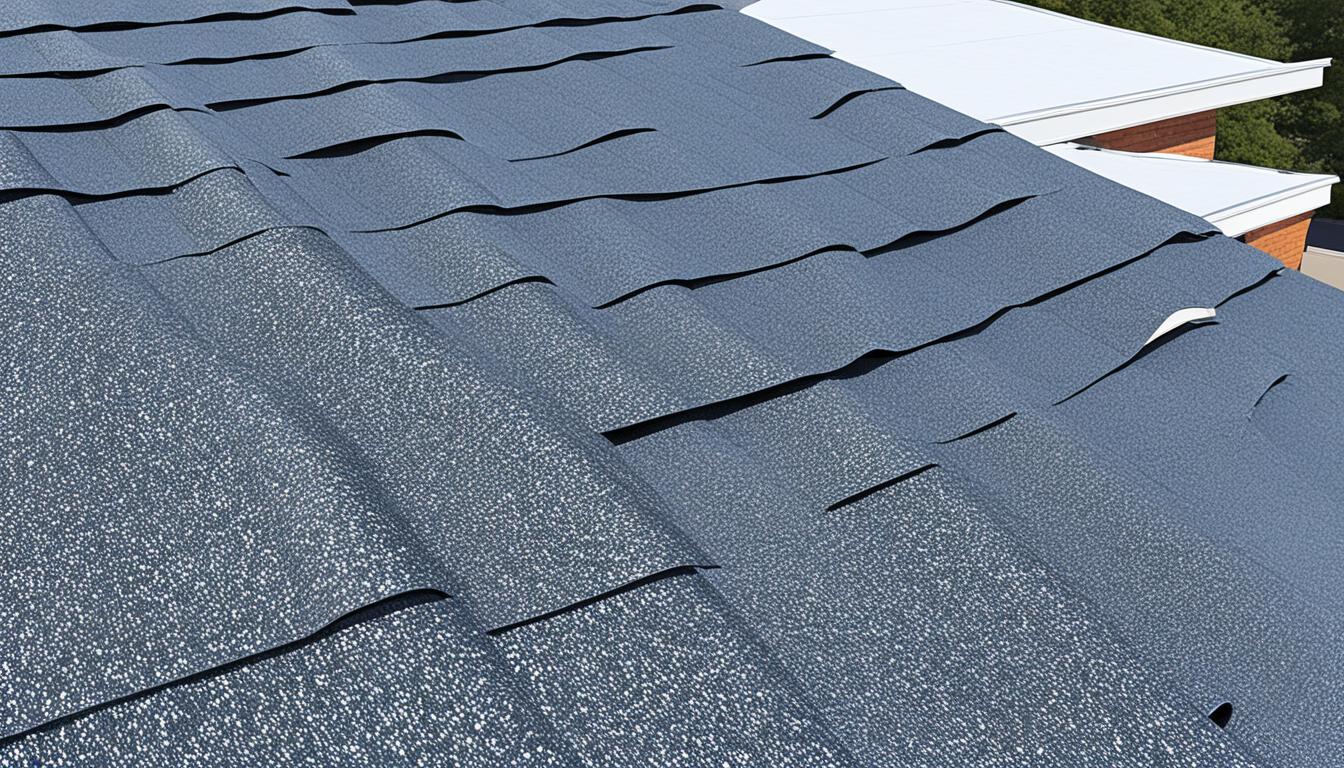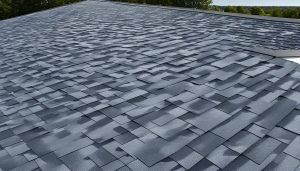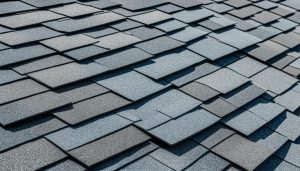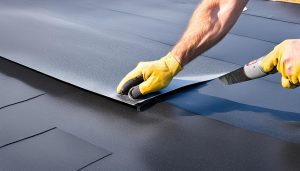Welcome to our comprehensive guide on roofing underlayment options for your construction business. In this article, we will compare the two popular choices – felt and synthetic roofing underlayment – and help you determine which one makes more business sense for your specific needs.
Roofing underlayment plays a crucial role in protecting your building from extreme weather conditions, preventing leaks, and increasing the overall lifespan of your roof. Choosing the right underlayment is essential for the success and profitability of your construction projects.
On the one hand, we have traditional felt underlayment, a time-tested solution that has been used for decades. On the other hand, we have synthetic underlayment, a modern alternative that offers several advantages over traditional felt.
In the following sections, we will explore the features, benefits, and drawbacks of both felt and synthetic underlayment options. This will enable you to make an informed choice that aligns with your construction business goals, project requirements, and customer expectations.
Understanding Felt Roofing Underlayment
Felt roofing underlayment is a commonly used material in the construction industry, known for its reliable performance and cost-effectiveness. In this section, we will explore the features and benefits of felt roofing underlayment, discussing its composition, installation process, durability, and cost-effectiveness.
Composition
Felt roofing underlayment is typically made from a blend of organic materials such as cellulose fibers, asphalt, and bitumen. This composition gives it excellent strength and resistance to weathering, making it suitable for various roofing applications.
Installation Process
The installation of felt underlayment is straightforward and does not require advanced skills or specialized tools. It is often rolled or laid out onto the roof deck before the placement of the roofing materials, serving as an additional layer of protection between the deck and the shingles or tiles.
Durability
Felt underlayment provides a reliable barrier against moisture, preventing water intrusion that can lead to damage in the underlying roof structure. It also acts as a protective layer, shielding the roof from potential leaks and minimizing the risk of premature wear and tear.
Cost-effectiveness
One of the major advantages of felt roofing underlayment is its affordability. Compared to other materials, such as synthetic underlayment, felt is generally more cost-effective, making it an attractive option for construction businesses looking to minimize expenses without compromising on quality.
Drawbacks and Limitations
While felt underlayment offers numerous benefits, it is important to consider its potential drawbacks and limitations. Felt is relatively heavier and bulkier compared to synthetic alternatives, which can make handling and transportation more challenging. Additionally, felt may have a shorter lifespan compared to synthetic underlayment, requiring replacement or maintenance sooner.
“Felt underlayment provides a reliable barrier against moisture, preventing water intrusion that can lead to damage in the underlying roof structure.”
Overall, felt roofing underlayment remains a popular choice for construction professionals seeking a dependable and cost-effective solution. Its composition, installation process, durability, and affordability make it a versatile option for a wide range of roofing projects.
The Advantages of Synthetic Roofing Underlayment
When it comes to choosing the right roofing underlayment for your construction projects, synthetic roofing underlayment offers a range of advantages that make it a favorable option. Let’s explore the benefits that synthetic underlayment brings to the table:
1. Enhanced Performance and Durability
Synthetic roofing underlayment is engineered to provide superior performance and enhanced durability compared to traditional felt underlayment. It offers excellent tear resistance, ensuring long-lasting protection for your roofs against harsh weather conditions. With its advanced materials and construction, synthetic underlayment reinforces the structural integrity of your roofs, delivering reliable performance and peace of mind.
2. Moisture Resistance
Synthetic underlayment is designed to resist moisture infiltration, keeping your roofs dry and protected. Its superior moisture barrier properties prevent water intrusion, reducing the risk of leaks and mold formation. By effectively channeling moisture away from the roofing system, synthetic underlayment helps maintain the structural integrity of your roofs, preventing costly damage and repairs.
3. Easy Installation
Installing synthetic roofing underlayment is a breeze compared to traditional felt underlayment. Its lightweight and flexible nature make it easy to handle and maneuver during the installation process. Synthetic underlayment often comes with pre-printed nailing patterns and guidelines, streamlining the installation and saving you valuable time and effort. Its user-friendly features make it an ideal choice for both professional roofers and DIY enthusiasts.
4. Cost Savings and Long-Term Benefits
While the upfront cost of synthetic underlayment may be slightly higher than felt underlayment, it offers significant cost savings and long-term benefits. Its enhanced durability and moisture resistance help extend the lifespan of your roofs, reducing the frequency of repairs and replacements. Additionally, synthetic underlayment’s superior performance can contribute to better energy efficiency, potentially lowering heating and cooling costs in the long run.
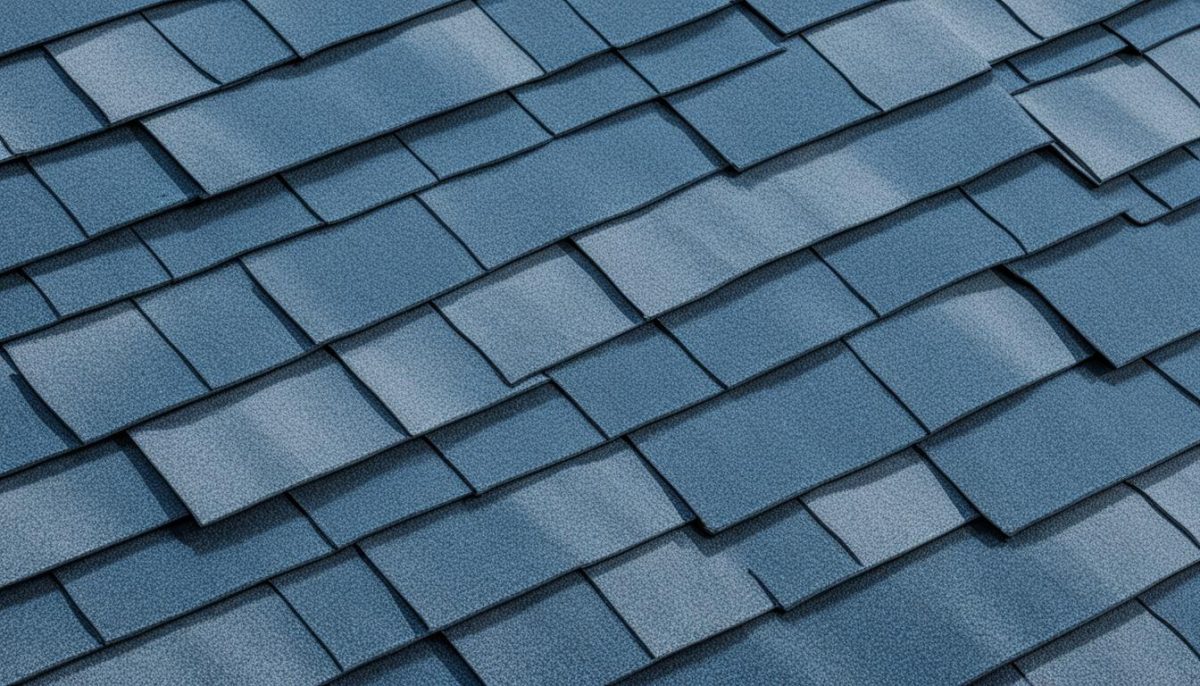
In conclusion, synthetic roofing underlayment provides numerous advantages, including enhanced performance, durability, moisture resistance, ease of installation, and long-term cost savings. With its advanced features and benefits, synthetic underlayment proves to be a valuable investment for your construction business, ensuring reliable and long-lasting protection for your roofs.
Making an Informed Choice for Your Construction Business
When it comes to roofing underlayment for your construction business, it’s crucial to make an informed choice that aligns with your specific needs. To help you decide between felt and synthetic roofing underlayment, we will consider several factors.
Firstly, budget plays a significant role in determining which option is the best fit. Felt underlayment tends to be more cost-effective upfront, making it an attractive choice for construction businesses working with tight budgets. On the other hand, synthetic underlayment may have a higher initial cost, but its long-term benefits and durability could outweigh the expense.
Secondly, project requirements should be carefully assessed. If you’re working on a project with specific moisture-related challenges, synthetic underlayment’s superior moisture resistance might be a key factor in your decision-making process. Conversely, if moisture is not a major concern in your region, felt underlayment might suffice.
Finally, it’s essential to consider climate conditions and customer preferences. Felt underlayment has been a trusted choice in various climates for many years, providing reliable protection. However, synthetic underlayment offers improved strength and enhanced resistance to extreme weather conditions, a significant advantage in areas prone to severe storms or high winds. Additionally, taking customer preferences into account can help you cater to their specific demands and ensure their satisfaction.

